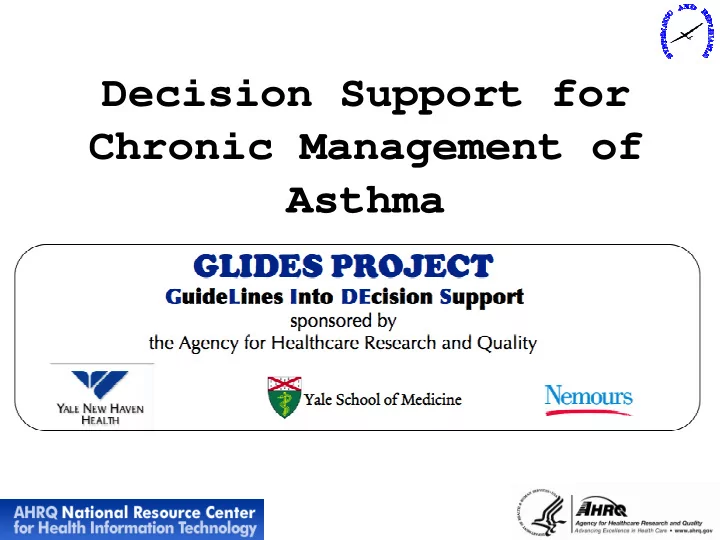

Decision Support for Chronic Management of Asthma
Asthma in Connecticut • 86,000 children in CT have asthma (9.7% of school population) • Asthma prevalence is highest in the lowest income groups • African-American and Hispanic children are hospitalized 5x as often as white children with asthma • New Haven’s rate of ED visits for asthma is second highest in CT • Widespread lack of understanding about asthma causes, treatment and symptom prevention
Clinical Objectives • Measure asthma control in a formalized manner – Optimize decision making; improve documentation of care, communication among providers • Choose appropriate therapies – Prevent errors of omission/ commission, optimize treatment • Distribute a personalized asthma action plan – Improve patient empowerment, improve education, improve communication • Improve provider satisfaction with CDSS
Behind the Scenes • Save each symptom and its frequency for consultant’s letter • Interpret Impairment: None, Mild, Moderate, Severe • Interpret Risk: Low, Moderate, High • Interpret Control: Well-controlled, Not well- controlled, Very poorly
According to EPR3, this patient meets criteria for Step 3
Clinical Objectives • Measure asthma control in a formalized manner • Choose appropriate therapies • Distribute a personalized asthma action plan • Improve provider satisfaction with CDSS
Recommend
More recommend